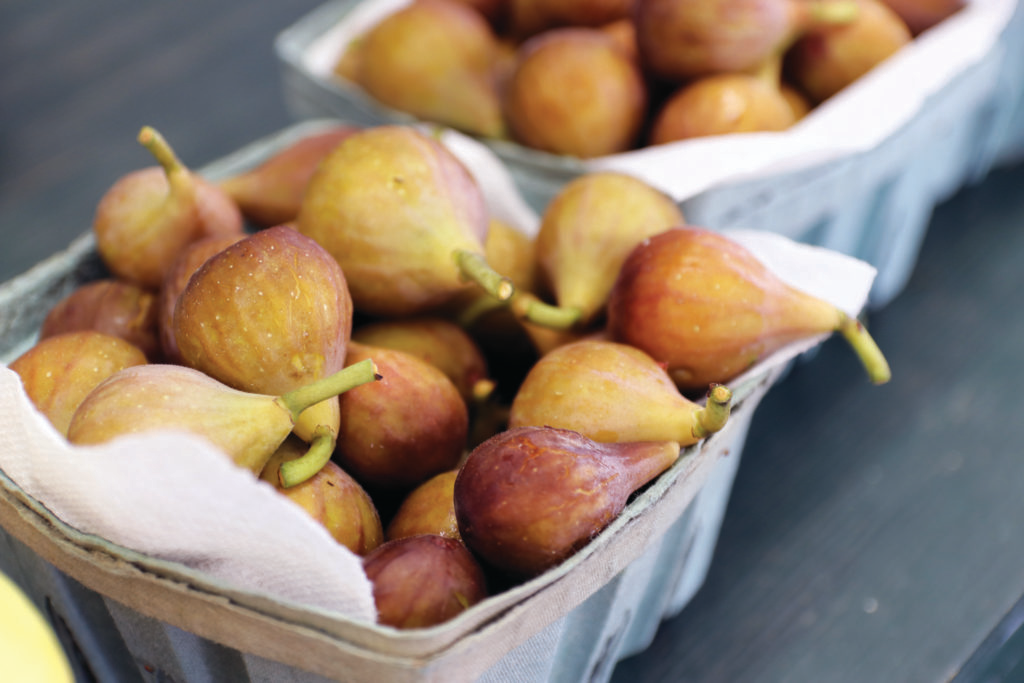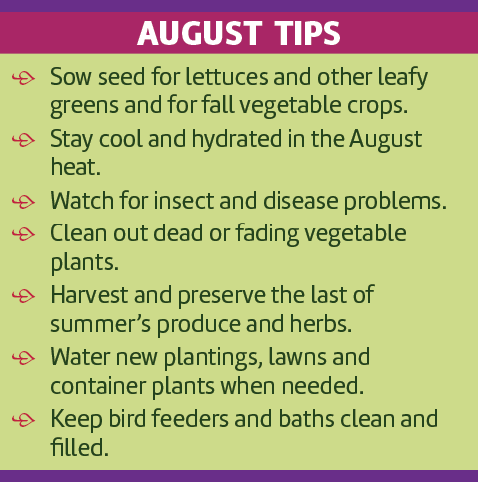By Katie Jackson

It’s fig season, that brief and glorious time of year when we get to enjoy one of the most local fruits of summer.
Actually, figs aren’t truly “local.” They are among some 800 plant species within the genus Ficus that are found in tropical and temperate regions across the globe. Many of these species are used for landscaping and as houseplants (weeping figs, rubber trees and creeping fig vine), others for things like rubber production and still others for just plain eating.
Edible figs are native to the Mediterranean and southwestern Asia where they were revered and cultivated for eons before they were introduced into other parts of the world, arriving in the U.S. as early as the 1500s. Today, edible figs are classified as four types — caprifigs, Smyrna, San Pedro and common — all of which play a part in the fig industry.
Of these, it’s the common fig that grows in most backyards and gardens. That’s because common figs, unlike the other three types, don’t require pollination to set fruit, making them perfect for home production. And some 800-plus named varieties of common figs are available to home gardeners, each producing fruit with its own unique tastes, textures and colors.
A fig’s fruit, known as a syconium, isn’t really a true fruit. It’s a pear- or teardrop-shaped cluster of tiny flowers and seeds wrapped snugly together within a thin outer skin. Depending on the variety, those skins may ripen into hues of greens, yellows, browns, blacks and purples, and the inner pulp may range from pale white to pink to deep tones of garnet and ruby.
But getting your hands on those little jewels requires perfect timing because, unlike most fruits, figs don’t continue to ripen after they’re picked so they must be harvested at the height of their maturity, which sometimes means twice a day. Once picked, ripe figs are too soft and fragile to ship and don’t last long even under refrigeration.
All that means that, to enjoy truly great fresh figs you have to get them locally and be prepared to immerse yourself in their goodness. While figs can be preserved by freezing, drying and canning, their flavor is best when eaten right off the tree or used fresh in dishes such as appetizers, salads, pizzas, main and side courses, sauces, fresh relishes and salsas and desserts.

If you’re lucky enough to pick your own figs this year, go for ones that are drooping from the stem and soft to the touch, but watch out for the sap, which contains enzymes that can irritate skin and sometime causes lips and tongues to tingle. If the sap bothers you, wear gloves while picking and make sure to wash figs before eating them raw.
Can’t find a source of fresh figs locally? Plant one of your own! Maybe even several different varieties. Fig trees can grow up to 30 feet high and wide but can be pruned to fit small spaces and can also be grown in containers. They need plenty of sunlight (around 8 hours a day) and prefer a well-drained and loamy soil with a soil pH around 6.0 but can tolerate a variety of soil types.
Fig trees usually take three to five years to bear fruit, and the first few crop yields may not be prolific, but it will steadily improve. Once established, figs are low maintenance. They need little pruning, are drought tolerant and have relatively few pest problems (mainly nematodes, borers and rust diseases). They appreciate a light dose of compost, manure or a balanced fertilizer a couple of times of year (though avoid doing it late in the growing season so you don’t promote new growth that can be damaged by freezing temperatures).
Lots more information about figs is available online including the Alabama Cooperative Extension System’s Fig Production Guide (ANR-1145; available online at aces.edu). Or get advice from fig-growing friends, your local Extension office and from nurseries that specialize in home fruit production.
Katie Jackson is a freelance writer and editor based in Opelika, Alabama. Contact her at [email protected].




